

Mapping the Geography of the Second Seminole War
A Visual and Interactive Learning Resource for the Second Seminole War in Florida (1835-1842)
Historical Context: The Second Seminole War (1835-1842)
The First Seminole War officially concluded in 1823, when the US Government and several tribes of Native Americans living in present-day Florida, including the Seminoles, signed the Treaty of Moultrie Creek. As part of the treaty, all of the Native Americans who lived in the Territory of Florida were required to move onto a reservation in Central Florida. In 1830, President Andrew Jackson, who fought in the US Army during the First Seminole War, signed the Indian Removal Act. This Act forcibly removed tens of thousands of Native Americans from their homes and relocated them to reservations west of the Mississippi River. The Seminoles, who by 1830 already lived on the reservation in Florida established by the Treaty of Moultrie Creek, considered this a violation of the treaty. Tensions rose between the US Government, who wanted to remove the Seminoles from Florida, and the Seminoles, who refused to leave. This led to the beginning of the Second Seminole War in 1835.
US Forts and their locations in Florida during the Second Seminole War (1835-1842)
*Some forts were not recorded on maps created during the war, but were added to maps created in later years based on their general locations.
The interactive map below depicts a selection of significant US forts where they existed in Florida during the Second Seminole War. US troops built about 200 forts across Florida between 1835 and 1842. Using information from American cartographer Henry Schenck Tanner's 1839 map of the state, the map below allows users to travel around present-day Florida and see where the forts stood in the nineteenth century. Some forts built during the war, like Fort Lauderdale and Fort Myers, later lent their names to major cities around the state. The selected forts offer a glimpse into the path of the War and the continued legacy of the battles and Veterans of the Second Seminole War.
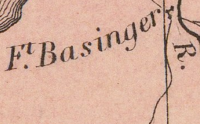
Fort Basinger

Fort Lauderdale
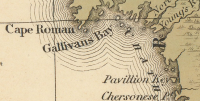
Fort Myers
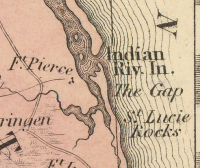
Fort Pierce
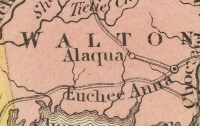
Fort Walton
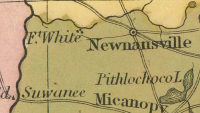
Fort White
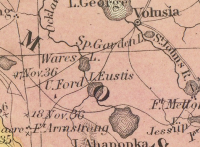
Fort Maitland
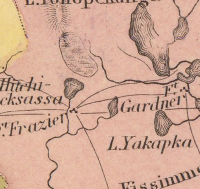
Fort Blount
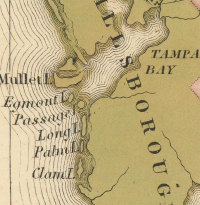
Fort Harrison
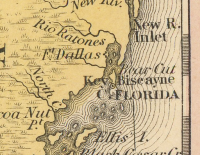
Fort Dallas
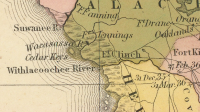
Fort Clinch
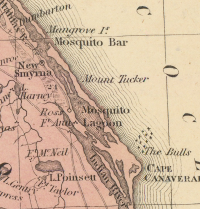
Fort Capron

Fort Marion
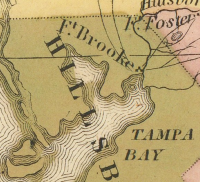
Fort Brooke
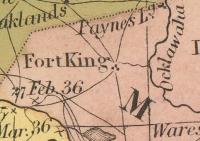
Fort King
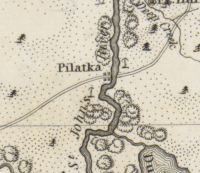
Fort Shannon
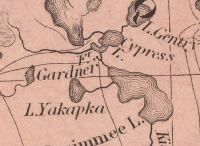
Fort Gardiner
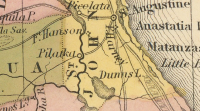
Fort Hanson
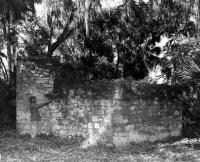
Addison Blockhouse
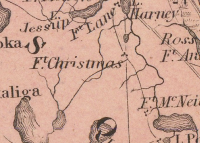
Fort Christmas
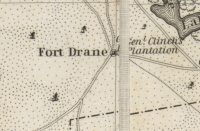
Fort Drane
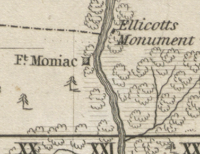
Fort Moniac
Present-day Florida versus Florida during the Second Seminole War (1835-1842)
Below, a present-day map of Florida is overlaid with two maps created during the Second Seminole War, one in 1836 by Myer M. Cohen and the other in 1838 by Washington Hood. The Slider Feature allows users to compare depictions of Florida from the 1830s with more contemporary depictions.
1836 map of Florida by Myer M. Cohen. Cohen served with the South Carolina Volunteers during the early months of the Second Seminole War. After his service, he worked as a cartographer and created maps during the early days of the US. Cohen originally created this map as a lithograph, a work made from sheet metal and stone.
Major Battles and Veterans of the Second Seminole War (1835-1842)
The guided tour below includes the locations of several major battles and deaths during the Second Seminole War in Florida.
01 / 07
1
Dade's Massacre
Dade's Battle, also called the Dade Massacre, was fought on December 28th, 1835. The first battle of the Second Seminole War, Dade's Battle began after a party of Seminole's ambushed a US military expedition led by BvtMaj. Francis L. Dade, near present-day Tampa Bay. The Seminoles killed more than 100 US soldiers during the Battle, including Dade. Many of the soldiers who died during the battle later became some of the earliest burials at St. Augustine National Cemetery.
2
The Battle of Wahoo Swamp
Fought between November 17 and November 21, 1836, the Battle of Wahoo Swamp began after US troops encountered Seminole warriors hiding out in the forests and swamps between Tampa Bay and Ocala. Maj. David Moniac, who in 1822 became the first Native American to graduate from the US Military Academy at West Point, died on the final day of the battle.
3
The Battle of Withlacoochee
The Battle of Withlacoochee, fought on December 31, 1835, just three days after Dade's Battle, was fought along the banks of the Withlacoochee River in present-day Polk County, FL. US troops suffered over sixty casualties during the battle, but the swampy Florida environment proved even more deadly. After the battle, diseases like malaria and yellow fever spread throughout forts and camps, killing hundreds of US troops by the end of the war.
4
Battle of Lake Okeechobee
Fought on Christmas Day, 1837, the Battle of Lake Okeechobee was one of the deadliest battles of the Second Seminole War, surpassed only by Dade's Battle. Although US troops suffered significant casualties during the battle, commanding officer Col. Zachary Taylor claimed victory after the Seminoles retreated into the surrounding forests, despite only suffering minor casualties. This propelled Taylor into the national spotlight, and led to his election to the presidency in 1848.
As a major natural landmark in Florida, US surveyors and military officers transliterated the name "Lake Okeechobee" from various native languages and dialects. Some variations in spelling and pronunciation include:
- Okechobee
2. Okee-chobee
3. Oke-cho-bee
4. O-kie-cho-bee
5. O-kee-cho-bee
6. Wee-thloko
7. Big Water
5
Major David Moniac
One of the first Native American graduate from West Point. David Moniac served during the Second Seminole War and died at Wahoo Swamp. Historians believe that David Moniac is buried under the Dade Pyramids at St. Augustine National Cemetery in St. Augustine, Florida.
6
Alexander Ramsey Thompson
Lt. Col. Alexander Ramsey Thompson, a West Point graduate, served during the Second Seminole War. Ramsey lost his life at the Battle of Okeechobee, his last words to his men being, "“Keep steady, men; charge the hammock – remember the regiment to which you belong.”
7
Henry Prince
Henry Prince was a soldier during the Second Seminole War. Prince's diary offers one of the most complete records of life in Florida during the early to mid 1800s, and the experience of soldiers on their day to day operations and encounters with the Seminoles.
Conclusion
The forts and locations mapped throughout this visualization serve as both a historical record of the forts and sites utilized during the Second Seminole War. In addition the presence of these shows forts, named after people and places of the Seminole Wars, demonstrate this conflict's legacy in Florida.
Discussion Questions
- How can maps tell us about life in the past and life today?
- How do you think that the terrain in Florida, swamps, rivers, forests, etc., impacted the experiences of soldiers moving around the state during the Seminole Wars? How were the movements of the Seminoles different or the same?
- What do you think it was like experiencing the Florida climate for the first time? How would you experience the Florida climate wearing wool uniforms?
- What was one of the most interesting facts about one of the Veterans you read about? Why?
- What remnants of the Second Seminole War can we see in Florida today?